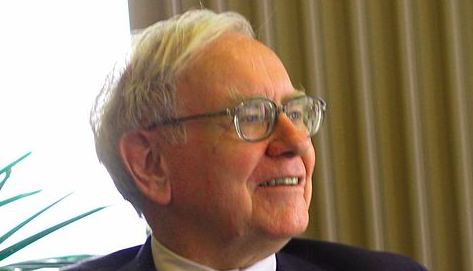
This is for your CEO.
I’ve just attended the Berkshire Hathaway 50th anniversary shareholder meeting in Omaha, Nebraska. Warren Buffett and Charlie Munger, Vice Chairman, reiterated what I’ve known to be true for years: they include customers and expect their companies to do the same. At one point, Buffett said point blank: “No company does well [in the long term] ignoring its customers.”
In 2008, I gave keynote speeches days after the financial crisis where I talked about Buffett’s philosophy and the customer experience lessons to be learned from him (and the way those lessons can help prevent future crises). This was a very popular talk – when I gave it to one of the leading financial services firms they told me it was the highest rated talk at the time internally. I was glad to hear it. I’m happy to share the influence Buffett and Munger have had on me and should have on CEOs and senior leaders everywhere.
Since the early 1960s Buffett has increasingly purchased companies based on the customer experience. One of the Berkshire CEOs told me last week that Buffett bought his company because of their very high customer loyalty. And he knew this because he asked Buffett after the sale what his most important reason was for buying his business. Without hesitation, Buffett answered: “your high customer loyalty.” And he then discussed the very details of that loyalty – details he knew as well or better than the CEO.
Buffett once bought companies based on “cigar-butt” investing – meaning that he’d try to get the last few puffs out of a business that was undervalued by the market. That philosophy, however, has not been true for many decades. Most of the value Buffett has created (and received) has come from well-run businesses with great customer loyalty purchased at reasonable prices.
Importantly, Buffett is willing to get out from behind his desk and see the customer experience firsthand. In the early 1960s, when Buffett bought his first major stake in American Express (today he owns 15%), he went out to Omaha restaurants and other locations to see if a temporary financial controversy was affecting consumer use of the cards. He actually sat and watched people – and once he was satisfied that customers were happy and oblivious to what was happening on Wall Street, he went ahead and purchased the stock.
Most people think Buffet’s a financial genius – and he is. But, he’s also a customer genius. The reason he’s a genius is because he’s not afraid to get into the details of the customer experience. Last week when I was speaking to Berkshire (and non-Berkshire companies) in the Omaha area, I didn’t have to bring up the story of Buffett getting out and watching customers. Executives knew that and told me about it – and they talked about how it impacted their own way of doing business.
When I give my Customers Included talks I emphasize the importance of this simple idea: get out from behind the desk and observe customers. Warren Buffett does it. Sam Walton of Walmart did it. Steve Jobs did it. But, most CEOs don’t.
Does your CEO include customers? Do they get into the details of the customer experience? Do they actually get out and spend some time during the year with customers?
If she doesn’t, then write to me and I’ll send you a copy of the book to share with her (or him).*
– Phil
* Note: if you are located outside the U.S., I’ll just ask you to pay for shipping.